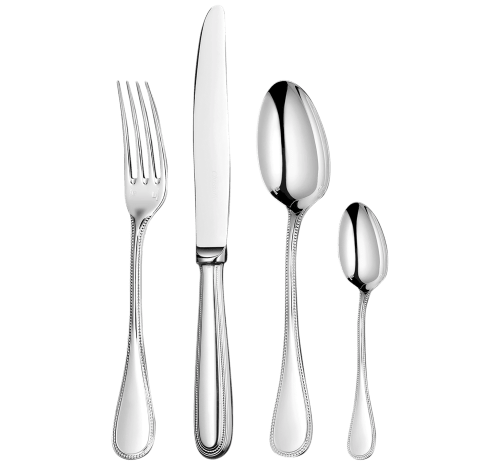Stainless Steel Flatware and How Spoons came into Use
by Inox Flatware Inox Flatware Online as Amazing as Cambridge Flatw
Whether they
were basic shaped rocks, carved clay and wooden sticks or modern day silverware
sets, human beings have been creating tools to help them eat food in an easier
manner since ancient ages. Among these, the spoon is considered as the ideal
tool in terms of versatility when it comes to preparing, serving, and eating
many different types of food.
It is of
simple design with a basic bowl in a convenient round or oval shape joined to a
long handle that is easy to hold, yet it has been in use without significant
changes to its design for thousands of years. These days, spoons are the main
part of any flatware, whether it is of a set from a well-known brand like Williams Sonoma flatware or sold as
part of serve ware. However, in the modern age, spoons have evolved into as
many as fifty designs.
Spoons have
surely had a lengthy yet interesting life since their invention all those
millennia ago. It is no surprise that nobody knows their exact year of
creation. However, they were already in existence at around 1000 B.C. as far as
archaeological findings are concerned.
The spoons
recovered from those ancient times contain a host of materials like slate,
ivory, wood, and flint, and seem to have multiple purposes ranging from
decorative to religious. Spoons at the time were probably meant for the
Egyptian elite such as priests and pharaohs - very different from the commonly
used stainless steel flatware
present in every home today.

The utensils
recovered in excavations also have the various important ceremonies depicted on
them in the form of detailed drawings and colorful hieroglyphs. As the ages
passed, spoons began to be made from metals like silver and bronze, as is
witnessed in the remains of Ancient Roman and Greece. Again, such utensils were
usually found in the possession of people with higher status.
Medieval
Europe showcased spoons and other utensils that had been created from pewter,
wood, animal horns, and brass. At the time, these must have been thought to be
convenient for the transportation of ingredients and meals for various living
beings. Wood began to be replaced by stronger and longer-lasting materials like
metals by the fifteenth century, where again, it was mainly accessible to those
in elite positions.
Historians
recall that the first mention of things resembling a spoon in England is as old
as the year 1259 to be exact, in the various accounts of King Edward I. Such
utensils were surely meant to represent the class and wealth of the owner at
the time due to their rarity. Special spoon collections were included in the
coronation and anointing ceremony of each king in that medieval period.
After the medieval era, spoons were still
being reinvented using different designs, shapes, and materials, throughout the
Renaissance period and the following Baroque and Victorian eras. This trend
continued until the completion of the eighteenth century before we finally got
the serving tray that is in use today.

Today’s
modern age sees the use of the spoon in a much wider range of uses than at the
time of its conception. To begin with, it has several uses in the culinary
field. Now that it is available in numerous shapes and sizes, we simply need to
select the right one to use in our consumption of foods that have more
liquid-like consistencies such as stews and soups along with frozen foods like
ice creams.
Nowadays,
there are also many reputed brands like Inox Artisans and Williams Sonoma
flatware that offer extensive ranges of spoons in their numerous forms like
flatware, serve ware, etc.
Sponsor Ads
Created on Jul 31st 2020 08:12. Viewed 406 times.



